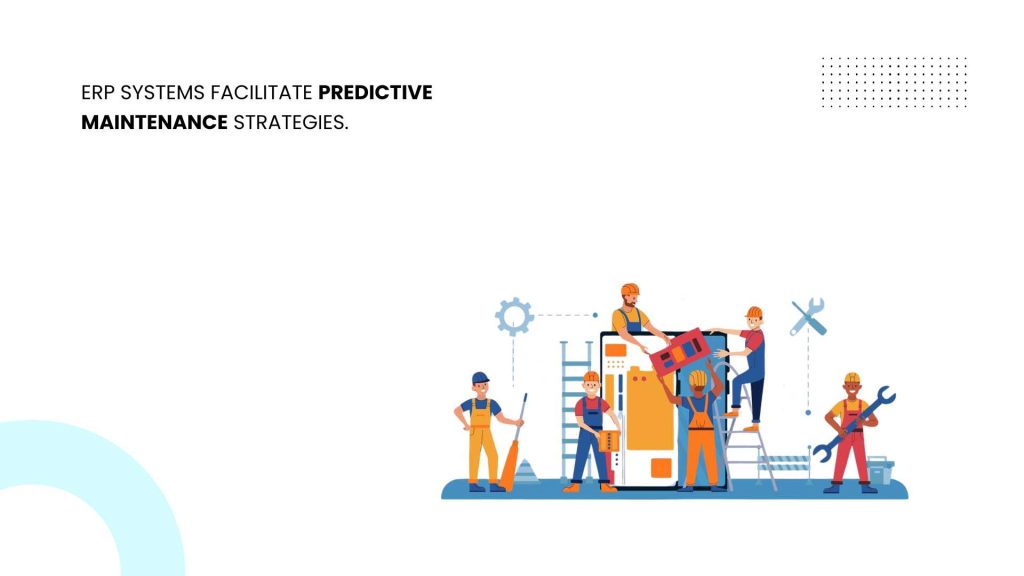Predictive maintenance is a proactive maintenance process that strives to predict and control equipment failures before they happen. Utilizing data analysis and machine learning anticipates failures and schedules interventions to reduce downtime, enhance performance, and cut costs.
Consider using an ERP system to implement predictive maintenance effectively. These systems collect and display real-time data and merge it with existing analytics to offer a more precise overview of a company’s efficiency, productivity, maintenance needs, and financial status. An ERP system can develop predictive models to assist decision-makers by integrating historical data with real-time analytics.
ERP supports predictive maintenance strategies
Predictive Analytics and Machine Learning:
ERP solutions with predictive analytics and machine learning capabilities can analyze historical data patterns to predict potential equipment failures. By identifying trends and anomalies, these systems help make informed decisions about when to achieve maintenance activities.
Data Integration and Aggregation:
ERP solution helps integrate and aggregate data from various sources, including equipment sensors, historical maintenance records, and other relevant databases. This centralized data repository allows for a comprehensive analysis of equipment performance and condition.
Streamlining Maintenance Processes:
ERP streamlines maintenance workflows by automating and optimizing work order generation, scheduling, and resource allocation processes. This efficiency contributes to timely and effective maintenance actions.
Continuous Improvement and Feedback:
ERP systems facilitate continuous improvement by providing insights into the effectiveness of maintenance strategies. Through performance metrics and analytics, organizations can refine their predictive maintenance approaches based on real-time feedback.
Regulatory Compliance:
Many industries have specific regulations regarding equipment maintenance. ERP systems assist in tracking and managing compliance with these regulations by providing documentation, audit trails, and reporting functionalities.
Enhanced Customer Satisfaction:
Predictive maintenance, supported by ERP systems, improves equipment reliability and reduces downtime. It, in turn, enhances customer satisfaction as disruptions and delays caused by unexpected equipment failures are minimized.
Data Quality and Consistency:
Assuring data quality is essential for accurate predictive maintenance. ERP helps maintain data integrity by enforcing standardized data formats, minimizing errors, and ensuring that the information used for analysis is reliable.
Failure Mode and Effects Analysis (FMEA):
ERP systems can support Failure Mode and Effects Analysis, a method used to systematically evaluate potential failure modes of equipment and their effects. This information aids in developing preventive maintenance strategies and prioritizing critical components.
Conclusion
Acumatica ERP emerges as a robust solution for predictive maintenance, offering a comprehensive suite of tools that seamlessly integrate with diverse organizational processes.
Its predictive analytics capabilities empower businesses to proactively anticipate and address potential equipment failures, thereby minimizing downtime and optimizing operational efficiency. With Acumatica ERP’s user-friendly interface and scalable architecture, organizations can harness the power of predictive maintenance to enhance asset reliability and ultimately drive sustained business success.
Read Related Blog: Ways To Reduce Downtime In Manufacturing

Vijay comes with a vast experience in ERP and enterprise solutions space with about 20 years of experience in various packaged application like Acumatica, SAP, Orion, Salesforce.com, SugarCRM and, SalesLogix.

